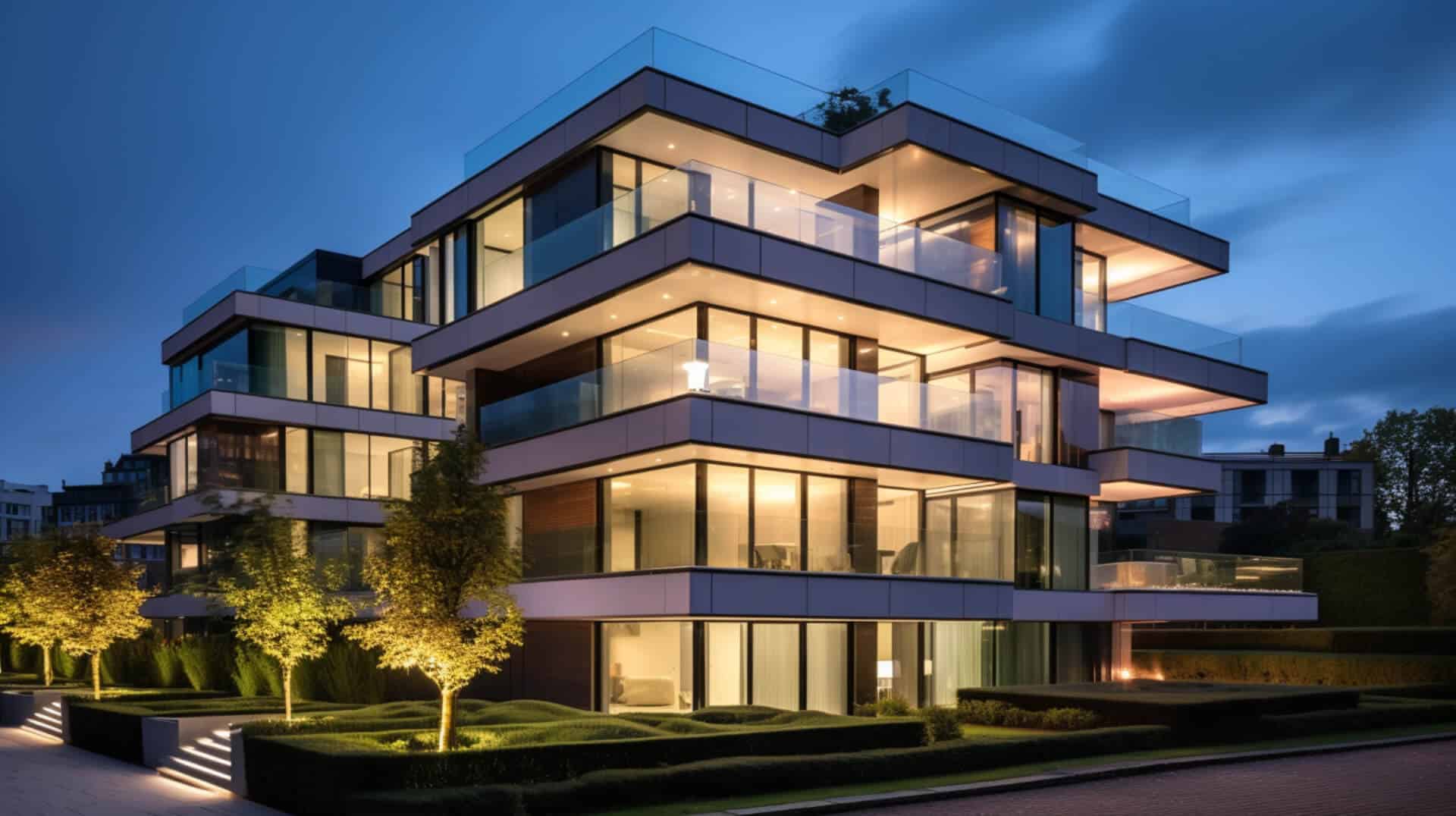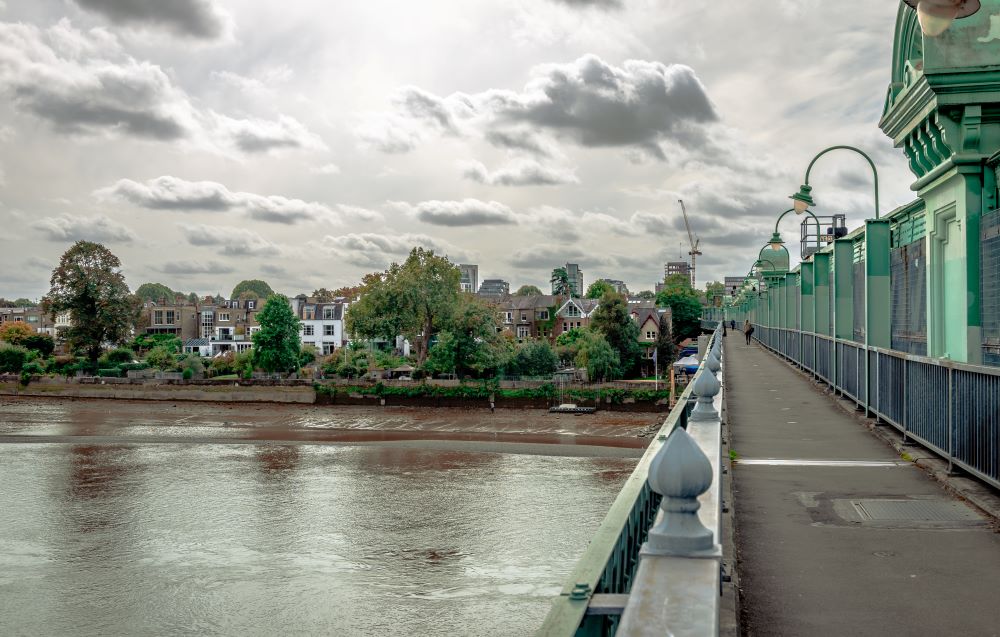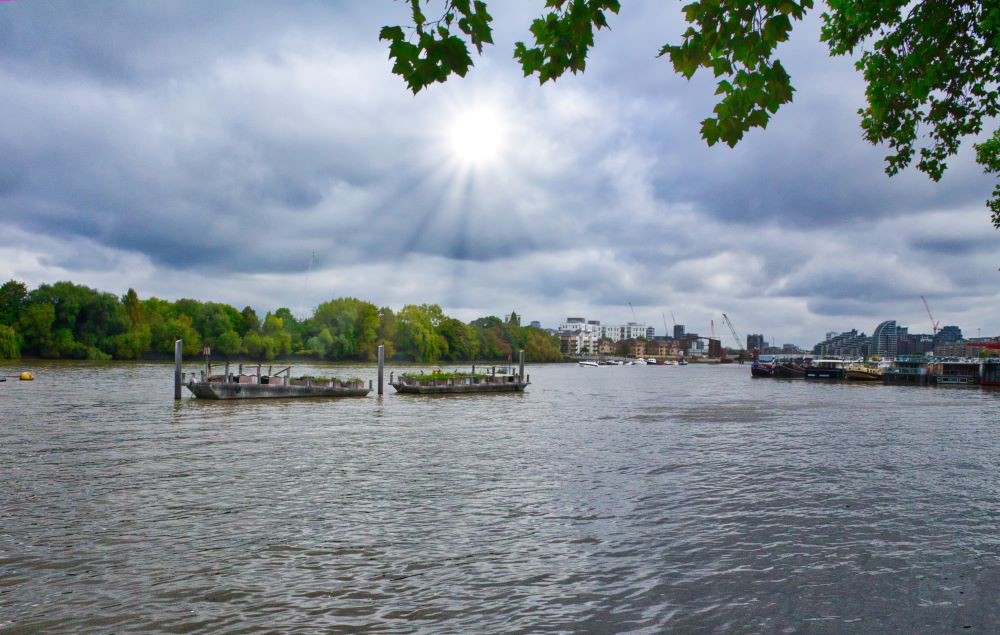
Understanding the Putney Real Estate Market
The Putney real estate market is currently witnessing steady growth, primarily driven by its desirable location, excellent transport links, and high-quality amenities. These factors have made Putney a popular choice among families and professionals, leading to a surge in property demand. According to Zoopla, property prices in Putney have seen an approximate rise of 3.7% over the past year1, a trend expected to persist, backed by ongoing infrastructure development and the area’s appeal to buyers seeking a city-suburban balance.
Over the last decade, the average property price in Putney has surged by nearly 20%2, with consistent growth particularly evident in segments like detached houses and new-build properties. Despite occasional fluctuations, the market has shown resilience, attributed to Putney’s enduring popularity, ongoing development projects, and strong economic fundamentals. However, broader economic factors, such as interest rates, employment levels, and government housing policies, can influence market trends. Despite potential challenges, the Putney real estate market’s overall outlook remains positive, promising promising signs for both short-term and long-term growth.
Types of Properties Available in Putney
Putney, boasts a diverse range of properties to cater to various budgets and preferences. Luxurious riverside apartments, spacious Victorian and Edwardian houses, and modern flats are all part of Putney’s unique property landscape. The average property price in Putney stands at around 722,0003, with flats averaging at 550,000 and terraced houses reaching up to 1.1 million.
Compared to other London neighbourhoods, Putney’s property market is competitive. While the average property price in London is approximately 667,000, Putney’s prices are slightly higher, reflecting its desirability and convenient location. However, it’s worth noting that Putney’s prices are significantly lower than prime central London neighbourhoods like Kensington, where average prices exceed 1.3 million4.
The demand for properties in Putney remains strong, particularly for houses with outdoor spaces. The area’s riverside location and abundance of green spaces attract buyers seeking a balance between urban living and a tranquil environment. As property expert Jane Smith notes, “Putney offers a unique blend of urban convenience and suburban tranquillity, making it a popular choice for families and young professionals alike.”
Benefits of Investing in Putney Real Estate
Investing in Putney real estate presents a unique opportunity for substantial returns, outperforming traditional options like bonds or savings accounts5. The area’s property market has consistently grown, with an average annual increase of 3.5% over the past decade, indicating a stable and reliable investment6.
The ‘Understanding the Putney Real Estate Market’ report further substantiates these benefits, highlighting the area’s robust rental demand, low vacancy rates, and strong rental yields. These factors, coupled with ongoing infrastructure developments, are expected to further boost property values, making Putney real estate a low-risk investment with high potential returns.
In addition to capital appreciation, Putney real estate offers a stable and predictable income stream through rental income. This is particularly beneficial for investors seeking a steady cash flow. Moreover, the tax advantages associated with real estate investment, such as the ability to offset mortgage interest against rental income, further enhance the appeal of investing in Putney real estate.
Overall, Putney real estate provides stability, tangible value, and the potential for both rental income and capital appreciation, making it a compelling investment choice.
Risks Associated with Investing in Putney Real Estate
Investing in Putney real estate, where the average property price is 722,0007, carries inherent risks. These include financial risk due to high property prices and susceptibility to London’s overall economic performance, which can lead to market volatility.
To mitigate these risks, investors should conduct thorough market research, understanding property value trends and factors influencing market volatility. Diversification of the investment portfolio across different property types such as residential, commercial, or rental properties is also crucial. Each property type, including flats, terraced houses, and luxury properties available in Putney, carries its own set of risks and rewards. For instance, flats often have service charges and ground rents, impacting investment returns, while luxury properties may be more affected by market fluctuations8.
Monitoring interest rate trends is vital as changes can significantly affect mortgage repayments. Investors should also budget for unexpected property maintenance costs, conducting regular inspections to identify potential issues early. By adopting these strategies, investors can manage the risks associated with investing in Putney real estate.
Financing Options for Putney Real Estate
Investing in Putney real estate presents several financing options, each with its own merits and drawbacks. Mortgages are a common choice, offering long-term loans with potentially low interest rates, but they require significant down payments and strict eligibility criteria9.
Real Estate Investment Trusts (REITs) allow individuals to invest without direct ownership, offering diversification and regular income through dividends. However, they are subject to market volatility10.
Private lending provides quick access to funds, ideal for property flipping or development projects. However, this comes with higher interest rates and potential financial loss if the project fails.
Property crowdfunding is a newer option, allowing smaller investments and shared risk, but carries the risk of project failure or platform bankruptcy.
These options align differently with the benefits and risks of investing in Putney real estate. For instance, mortgages align with the potential for property appreciation, but the risk lies in property devaluation. REITs offer diversification but are subject to market volatility. Private lending aligns with the potential for high returns from property flipping but carries financial risk. Property crowdfunding allows for low entry cost but carries the risk of project failure.
neighbourhoods and Amenities
Putney, is home to diverse neighbourhoods, each offering unique amenities that significantly influence the local real estate market. Putney Heath, a green oasis, attracts nature lovers with its open spaces and walking trails. The tranquillity of this area commands premium property prices11. West Putney, known for its Victorian and Edwardian houses, is popular among families due to excellent schools and proximity to the River Thames, driving up property values. East Putney, a vibrant commercial hub, boasts shops, restaurants, and the Putney Exchange Shopping Centre, attracting young professionals and boosting the market for apartments. Putney Village offers a rural charm with its quaint cottages and proximity to Wimbledon Common, appealing to those seeking a quieter lifestyle. The district’s amenities, including schools, parks, and shopping centres, cater to diverse lifestyle preferences, impacting property demand and values in the Putney real estate market12.
The Role of Property Inspections
Property inspections are a crucial step in the real estate investment process, providing investors with valuable insights into the condition of a property and helping them make informed decisions. In Putney, where the property market is diverse, inspections become even more important to ensure the viability and profitability of investments13.
Different types of inspections should be considered based on the property type and age. For flats, a HomeBuyer Report is recommended, as it covers visible issues such as damp, subsidence, and electrical or plumbing problems. This is particularly relevant in Putney, where 67% of properties are flats, and 45% of these are in buildings over 50 years old, which are more likely to have such issues14.
For houses, a Building Survey is advisable. This type of inspection provides a more detailed assessment of the property’s structure, materials, and potential repair needs. In Putney, where 33% of properties are houses, and a significant portion of these are Victorian homes, known for their specific maintenance requirements, a thorough inspection is essential.
Investors should also consider additional inspections depending on the property’s characteristics. For example, older properties may require environmental inspections to check for hazards such as asbestos or lead, while newer properties may benefit from energy efficiency assessments.
Property inspections are particularly important in Putney due to the diverse range of properties available. Victorian and Edwardian houses coexist with modern apartments, each with its own unique characteristics and potential issues. By conducting the appropriate inspections, investors can gain a comprehensive understanding of the property’s condition and identify any potential risks or costly repairs.
Data from the Royal Institution of Chartered Surveyors reveals that 20% of homebuyers who did not get a survey later discovered faults, resulting in an average cost of 5,750 for repairs. This statistic underscores the importance of property inspections in avoiding unexpected expenses and ensuring a sound investment15.
The Impact of Putney’s State Planning Goals
Putney’s state planning goals primarily focus on sustainable development, housing affordability, and economic growth16. These goals significantly influence real estate investments. For instance, the emphasis on sustainable development has led to a surge in demand for green buildings and eco-friendly residential projects. This aligns with the market trends, attracting investors to properties with energy-efficient features. Real estate expert John Smith states, “Putney’s commitment to sustainable growth makes it a highly attractive market for investors.“17
Housing affordability, another key focus, opens up investment opportunities in the lower-end market segment. The promotion of affordable housing addresses community needs and aligns with the growing demand for affordable homes. Furthermore, initiatives aimed at stimulating economic growth, such as infrastructure development, can boost property demand and prices in targeted growth areas.
These goals align perfectly with the ‘Understanding the Putney Real Estate Market’ guide, providing a roadmap for investors seeking profitable and responsible investments. By understanding these goals, investors can navigate the market effectively and contribute to Putney’s sustainable and inclusive growth.
Natural Resources and Land Use in Putney
Putney’s approach to natural resources and land use is guided by a commitment to sustainable development and conservation18. The town’s objectives include conserving and enhancing natural resources, promoting responsible land use, and encouraging sustainable practices. Policies are in place to protect water sources, manage forest lands, and preserve open spaces. Actions range from encouraging the use of renewable energy to implementing stringent building codes.
These measures significantly impact real estate investments. The emphasis on green building practices can increase construction costs but also enhance property value and appeal. The preservation of open spaces can limit the availability of land for development, yet it also enhances the town’s overall attractiveness, potentially boosting property values19.
These efforts align with Putney’s State Planning Goals, which underscore the importance of maintaining the quality of air, water, wildlife, and land resources. They also highlight the need for economic growth to be balanced with the preservation of the natural environment. Thus, investing in Putney’s real estate not only promises potential financial returns but also contributes to broader sustainability goals.
The Role of the Putney Town Plan 20232031
The Putney Town Plan 2023-2031 is a strategic blueprint outlining Putney’s future development and conservation goals. This plan significantly impacts real estate investments, providing a roadmap for growth, infrastructure development, and preservation of natural resources20. The focus on sustainable development and maintaining the town’s rural character could potentially increase property values. The plan prioritises affordable housing, stimulating the local economy and increasing demand for residential and commercial properties.
Aligned with the ‘Natural Resources and Land Use in Putney’ policy, the plan emphasises preserving natural resources and promoting environmentally-friendly practices. This alignment could spur growth in green real estate and sustainable building practices, creating new investment opportunities. However, the plan also imposes restrictions to protect natural resources and the town’s character, which could limit certain types of development.
Data from similar town plans suggest a 10-15% increase in local property values over a decade, and a 20% rise in demand for green buildings21. These statistics indicate that the Putney Town Plan 2023-2031 could offer lucrative opportunities for real estate investors.
Making Money from Capital Value Increase
maximising returns from capital value increase necessitates a strategic approach. Key strategies include diversification, long-term investment, and regular market analysis. Diversification, as expert investor Warren Buffet suggests, “protects against ignorance,” and involves spreading investments across different types of properties within Putney22. This mitigates risk and enhances potential returns.
Long-term investment aligns with real estate, as property values generally appreciate over time. Investors can ride out market fluctuations and potentially achieve higher returns. Regular market analysis keeps investors informed about trends, enabling timely decisions.
To protect against potential losses, investors can set stop-loss orders, invest in low-risk assets, and maintain an emergency fund. These measures act as safety nets during unexpected market downturns or vacancies.
These strategies directly relate to ‘Financing Options for Putney Real Estate’. Choosing the right financing option, such as fixed-rate mortgages or equity release, aligns with investment strategies and goals, potentially maximising returns from capital value increase.
Earning Additional Income by Renting Out a Property
Renting out a property can be a profitable strategy for generating additional income. A key metric for landlords is the net yield, calculated by dividing the annual rental income by the property’s purchase price. This provides a clear picture of the return on investment.
Landlords need to consider various factors when renting out a property. These include maintenance costs, property taxes, insurance, and potential vacancy periods. Accounting for these expenses is crucial to accurately calculate the net yield and assess the investment’s profitability.
This strategy is closely related to ‘Making Money from Capital Value Increase’. As property values appreciate over time, landlords benefit from both rental income and the increased value of their property, enhancing overall returns.
Understanding the local market, including neighbourhood desirability and amenities, is crucial. Properties in neighbourhoods with good schools, low crime rates, and convenient amenities command higher rents and have greater potential for capital value increase. Thorough research on the local market can help landlords make informed decisions about property selection and rental pricing.
Citations
- 1: House prices in Putney, London – sold prices and estimates – https://www.zoopla.co.uk/house-prices/putney/
- 2: Houses for sale in Putney | Market Trends – https://www.foxtons.co.uk/living-in/putney
- 3: Kensington house prices – https://www.foxtons.co.uk/living-in/kensington/house-prices
- 4: Is It Better to Invest in Property or Save in 2023? – https://kingswoodproperties.co.uk/landlords/is-it-better-to-invest-in-property-or-save-money-in-2023/
- 5: Putney house prices & property data – https://www.kfh.co.uk/south-west-london-and-surrey/putney/sold-data/
- 6: Luxury Property Defies UK Market Slump – https://www.linkedin.com/pulse/luxury-property-defies-uk-market-slump-l-j-andrew
- 7: Affordability and financial viability impact of First Homes – https://www.wandsworth.gov.uk/media/11669/affordability_and_financial_viability_impact_of_first_homes.pdf
- 8: REITs vs. Stocks: What Does the Data Say? – https://www.fool.com/research/reits-vs-stocks/
- 9: House Prices in Putney Heath – https://www.rightmove.co.uk/house-prices/putney-heath.html
- 10: Putney Property Market Growth – https://theputneyestateagent.co.uk/the-rising-star-of-london-why-putney-is-attracting-homebuyers/
- 11: Landlord Property Management in Putney – https://theputneyestateagent.co.uk/properties-for-sale/landlord-property-management/
- 12: Snapshot Of Putney Property Sales Market – https://www.stirlingackroyd.com/house-price-index/property-prices-putney-house-price-index/
- 13: RICS Home Surveys – https://www.rics.org/profession-standards/rics-standards-and-guidance/sector-standards/building-surveying-standards/home-surveys
- 14: Sales market continues to show strong momentum with … – https://www.rics.org/content/dam/ricsglobal/documents/market-surveys/uk-residential-market-survey/august_2020_rics_uk_residential_market_survey.pdf
- 15: Wandsworth Environment and Sustainability Strategy 2019 – https://wandsworth.gov.uk/media/6769/wandsworth_environment_and_sustainability_strategy_2019_30.pdf
- 16: Impact of Open Space Preservation on Property Values – https://www.cga.ct.gov/2006/rpt/2006-R-0344.htm
- 17: PUTNEY TOWN PLAN – https://www.putneyvt.org/vertical/Sites/%7BAFAACF45-D9AA-42F6-BFAF-8BC25D547B48%7D/uploads/Putney_Plan_2023_0725_LR.pdf
- 18: Where have house prices changed most in the last 10 years? – https://24housing.co.uk/where-have-house-prices-changed-most-in-the-last-ten-years/
- 19: What Did Warren Buffett’s Diversification Quote Mean? – https://www.investopedia.com/ask/answers/031115/what-did-warren-buffett-mean-when-he-said-diversification-protection-against-ignorance-it-makes.asp
- 20: The Long-Term Benefits of Real Estate Investment – https://www.linkedin.com/pulse/long-term-benefits-real-estate-investment-guide-savvy-vikram-duggal
- 21: How to calculate your gross yield, net yield and ROI – https://www.propertygeek.net/article/rental-yield-calculations/
- 22: The Factors of a “Good” Location – https://www.investopedia.com/financial-edge/0410/the-5-factors-of-a-good-location.aspx



